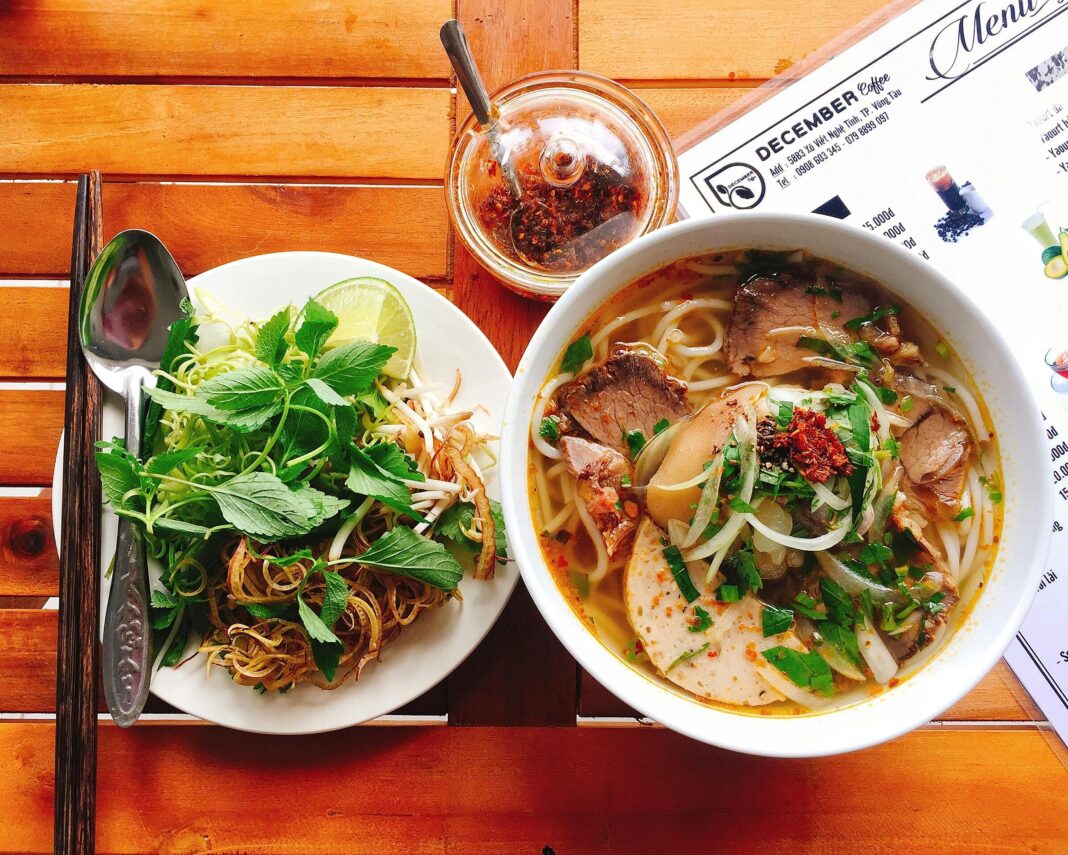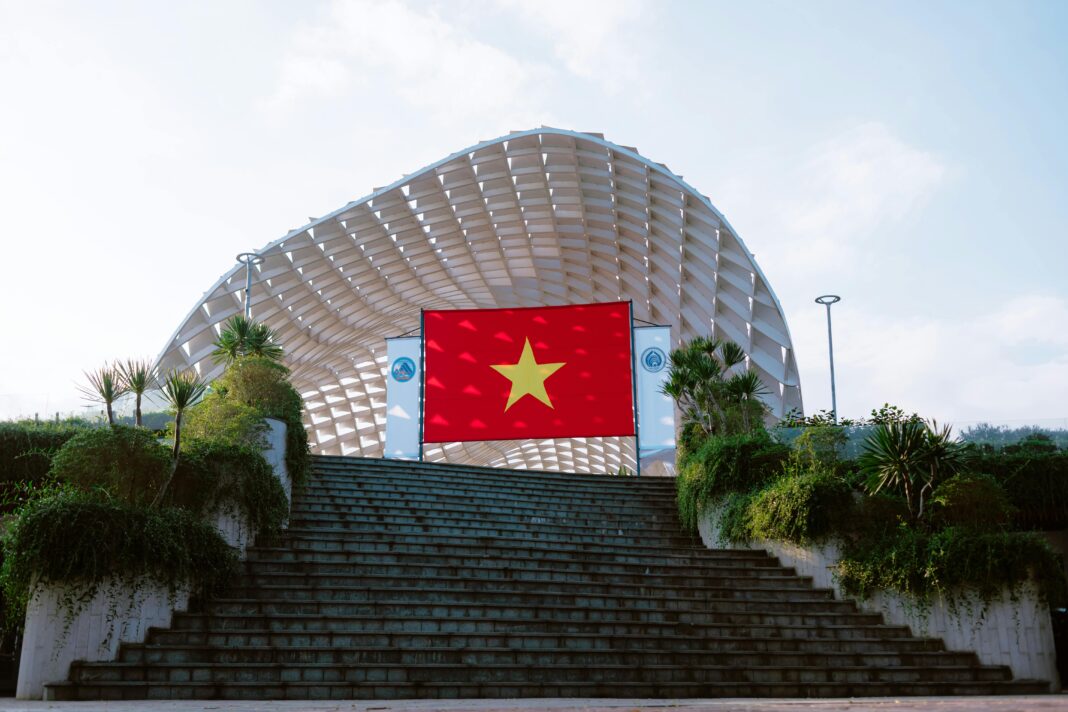Da Nang is a city that knows how to feed you right. From sidewalk stalls to beachfront restaurants, the flavors of Central Vietnam are bold, fragrant, and unforgettable. But figuring out what to order can be a little overwhelming if you’re new to Vietnamese food.
This guide breaks down the most popular Vietnamese dishes, what makes each one special, and what ingredients you’ll likely find in each. Whether you’re an adventurous eater or a cautious foodie, you’ll find something here to fall in love with.
Phở (Vietnamese Noodle Soup)
Let’s start with the most iconic Vietnamese dish: Phở. It’s a clear, aromatic broth served with flat rice noodles and either beef or chicken. The flavor comes from simmering bones and spices for hours, then topping the soup with fresh herbs and garnishes.
Typical ingredients include flat rice noodles, thinly sliced beef or shredded chicken, a broth made with star anise, cloves, cinnamon, charred ginger, and onion. It’s finished with fish sauce, lime, Thai basil, bean sprouts, sliced chili, and green onions.
Where to try it in Da Nang: Phở 75, Phở Hồng, or at a street-side vendor on Nguyễn Văn Linh.
Bún Chả (Grilled Pork with Vermicelli Noodles)
This dish originated in Hanoi but has become a beloved staple throughout Vietnam. It features grilled pork patties or slices served over rice vermicelli noodles, with a side of dipping sauce and plenty of herbs.
Typical ingredients include grilled pork patties or pork belly, vermicelli rice noodles, fresh herbs like mint and perilla, pickled carrot and daikon, and a sweet-savory fish sauce-based dipping sauce called nước chấm.
Where to try it: Bún Chả Cá Bà Lữ or Bún Chả Hà Nội Nem Nướng in central Da Nang.
Gỏi Cuốn (Fresh Spring Rolls)
These fresh spring rolls are wrapped in soft rice paper and filled with a mix of shrimp, pork, vermicelli noodles, lettuce, and herbs. They are usually served cold and dipped into a rich peanut or hoisin-based sauce.
Typical ingredients include boiled shrimp, sliced pork, rice vermicelli noodles, lettuce, mint, chives, and rice paper wrappers. The dipping sauce often combines hoisin sauce, peanut butter, garlic, and crushed peanuts.
Where to try it: Bánh Xèo Bà Dưỡng offers a tasty combo plate that includes fresh rolls.
Bánh Xèo (Vietnamese Sizzling Pancake)
Bánh xèo is a crispy rice flour pancake that’s pan-fried and folded over a filling of shrimp, pork, and bean sprouts. It’s typically eaten by tearing off a piece, wrapping it in lettuce with herbs, and dipping it in fish sauce.
Typical ingredients include rice flour batter made with turmeric and coconut milk, shrimp, thinly sliced pork, bean sprouts, and mung beans. The dish is served with lettuce, perilla leaves, and a fish sauce-based dipping sauce.
Where to try it: The legendary Bánh Xèo Bà Dưỡng in Da Nang.
Cao Lầu (Hoi An Specialty Noodles)
A must-try regional dish, Cao Lầu is native to nearby Hoi An and features thick, chewy noodles with slices of pork, a small amount of broth, and crunchy rice crackers.
Typical ingredients include thick rice noodles (soaked in water from Hoi An’s famous Ba Le well), marinated pork, bean sprouts, herbs like basil and cilantro, crispy rice crackers, and a light soy-based sauce or broth.
Where to try it: Mi Quang 1A in Da Nang or head to Hoi An for the real thing.
Mì Quảng (Turmeric Noodles with Pork and Shrimp)
The signature dish of Quang Nam province, Mì Quảng is a dry noodle dish with just a little broth, known for its yellow turmeric-infused noodles and flavorful toppings.
Typical ingredients include turmeric rice noodles, slices of pork, shrimp, hard-boiled quail eggs, peanuts, bean sprouts, herbs, and crispy sesame rice crackers. The broth is usually light and made with pork or chicken bones.
Where to try it: Mì Quảng Bà Mua is a local favorite with several locations in Da Nang.
Chè (Vietnamese Sweet Soup or Dessert)
Chè refers to a wide range of sweet treats—usually in the form of pudding-like soups, jellies, or drinks served in a glass or bowl. It’s the perfect way to end a meal.
Typical ingredients vary depending on the version, but common ones include mung beans, black beans, red beans, coconut milk, tapioca pearls, fruit jelly, pandan, lotus seeds, and palm sugar syrup.
Where to try it: Chè Liên is the go-to spot for locals and tourists, offering dozens of varieties to explore.
Tips for First-Time Vietnamese Food Lovers
- Always try the herbs. They’re not just for decoration—they balance the dish.
- Fish sauce is a staple and appears in almost every savory dish. Don’t fear the funk.
- Most dishes are meant to be customized to your taste. Add lime, chili, or herbs freely.
- Street food is usually safe, especially at busy stalls where turnover is high.
- Use chopsticks and a spoon together for noodle dishes—it’s the local way.
- If something’s delicious, say “ngon quá!” (delicious!) to your server or host.
Final Thoughts
Vietnamese cuisine is a flavorful journey of contrasts—light yet bold, simple yet complex. Whether you’re savoring a bowl of phở at sunrise or enjoying crispy bánh xèo by the beach, Da Nang offers endless opportunities to discover your next favorite meal.
Next time you’re unsure what to order, just ask yourself:
What the Pho?!



